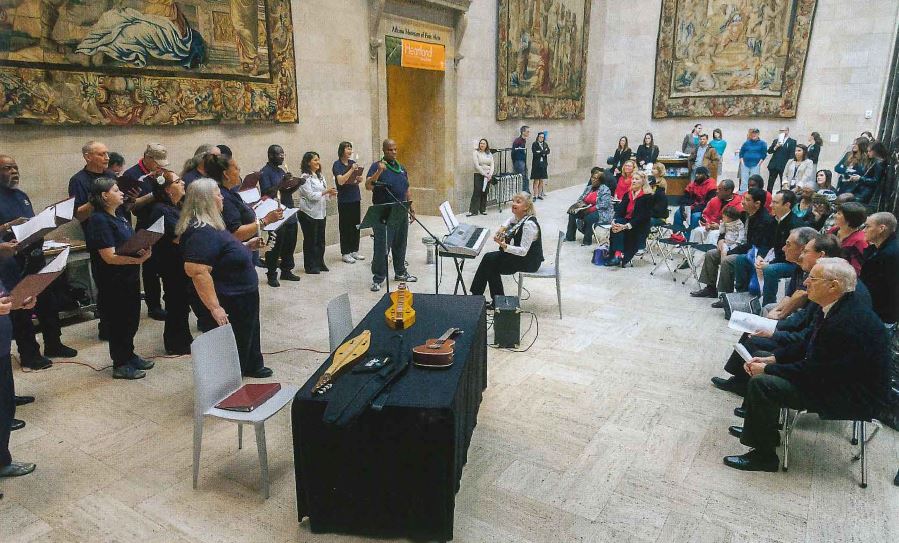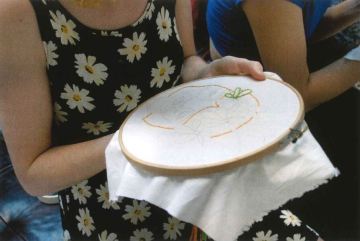
This article originally appeared in the March/April 2013 edition of Museum magazine.
Fourth of A Four-Part Series
Following is the final installment in our chronicle of the Alliance’s Innovation Lab for Museums. a grant-funded program that enables participants to incubate organizational innovation in a lab-like setting over 18 to 24 months. The Lab is a partnership of AAM’s Center for the Future of Museums with EmcArts. with funding by the Metlife Foundation. In previous issues, we’ve learned about the program as a whole and heard from the Levine Museum of the New South and the Yerba Buena Center for the Arts about their Lab work.
Now up Kansas City’s Nelson-Atkins Museum of Art. which has been striving to transform its relationship with its visitors. This is the third and last museum participating in the first round of the Lab. Participants for the second round will be announced in July.
Nelson-Atkins Museum of Art
Our grant proposal to Innovation Lab for Museums began with the desire for an extended conversation. In the previous few years, we had discovered new ways to encourage visitors to meaningfully participate in our work at the museum and had been modifying many of our public program offerings accordingly. But all these initiatives had taken place in the confines of a museum visit. We wanted to explore ways to continue the exchange beyond the museum visit experience and integrate into the daily fabric of our visitors’ lives. We found that we currently do not have such a mechanism in place, beyond occasional activity on social networking sites like Facebook and Twitter.
The creative spark that began this project centered on an electronic platform for promoting a continued exchange following a museum visit. We researched museum audiences, our community, and the concepts of “play” and “third spaces,” and discovered that we had no idea how to invite people into our project development process. We are among many museums struggling to respond to audiences’ desire to move beyond mere participation to proactively shaping their leisure experiences. We wondered how we could create a space and a system to incorporate audience ideas and participation as we develop exhibits and other projects. As museum professionals, we are comfortable developing exhibitions and programs for audiences, rather than with them, based on knowledge of our collections.
In the first phase of the project, we identified our main struggle as the act of true collaboration: inviting someone with a novel idea to develop something with us that would not have been possible otherwise. We realized the emphasis of our project had morphed from creating a new platform for participation to learning how to work with our community in a more collaborative way-that is, co-creation. We decided to explore two fundamental concepts: the invitation to co-creation and the product of co-creation.
Phase Two of the Lab focused on defining these questions and moving towards implementation. And boy, did we develop a system! Numerous spreadsheets, schedules, and marketing plans later, we realized that we had reverted to old ways of working. There was nothing innovative about our approach to the questions we had worked so hard to define. At the final hour, we realized we would have to use new methods and stretch new muscles. If we felt competent and comfortable, it was a sign that we were leaning on established processes. We agreed to keep processes simple and nimble and within our group of 10 staff members.
As we began talking to community members, it turned out that inviting outsiders into our circle was not as simple as we thought. First, outside people didn’t understand what we wanted. “Don’t we already offer great programs and exhibitions?” “Don’t museum staff already know how to do that?” Second, their suggestions were clearly influenced by their perceptions of appropriateness at an art museum, which society has shaped for several centuries, and, frankly, did not push the team in new directions.
Our next approach focused on the passions and interests of the individual. Team members committed themselves to engaging in conversations with close acquaintances (barber, fitness partner, neighbor, etc.) and strangers (waiter, shop clerk, etc.) about something they cared about and then asked them to imagine such a thing at the Nelson-Atkins Museum of Art. This, too, was a false start as people struggled with imagining the hypothetical activities at the museum. Ideas sparked by the conversation tended to surface later, so we developed a business card that included contact information and a few examples. This gave people the freedom to move beyond traditional art museum ideas and contact us after processing the question.
Eventually, the success of this approach resulted in myriad suggestions that required a filter before moving toward co-creation. We developed some criteria that allowed the group to vote on moving each idea forward:
- Did the idea originate in the community?
- Does it fit the Lab’s definition of innovation, i.e., small experiments with radical intent?
• small (manageable with given time, staff and financial resources)
• experimental (something new we haven’t done before)
• testable (something we can learn from)
• radical intent (aligned with the Nelson-Atkins’s new community-centered mission and strategic plan; engaging new people or “old” people in new ways)
• leadership (audience confusion about who is really leading the project would indicate success) - Can the idea be co-created? Can this individual or group participate in leading and marketing the idea?
Though the criteria may seem self-evident, it was surprising how important they were to the process. Often our group of staff members would begin a discussion, stimulated by a community suggestion, and begin to shape ideas ourselves. Other times, community members loved an idea but did not have the time or interest to complete it with us. Occasionally, community members wanted to work independently, almost as contractors. The established criteria kept the project aligned and the group moving toward its goal.

In spite of a few struggles, our work has proven quite fruitful. To date, we have implemented or scheduled craft evenings, dog art days (dogs and their owners creating art on the lawn), musical group performances, a “Kansas City Thinks” roving event based on our Rodin sculpture, the collaborative exhibition “The Magnificent Collection of Gilbert G. Hargrove” and more. We have also hired a part-time project coordinator to efficiently interface with community members.
In addition to the coordinator, each event requires at least two team members. Sometimes, an additional staff member may be required to ensure the project’s success. The co-creation team, therefore, consists of three or four staff members and two to eight community members who are in charge of developing, implementing
and marketing a project. All projects are documented through photography and/or video. We are also evaluating each project to analyze who participates and why, how it differs from traditional offerings and how it influences other museum visitors.
The most significant lesson that we have learned to date is that we can, in fact, be nimble. As a point of reference, public programs at the Nelson-Atkins are traditionally developed at least six months prior to their scheduled date in order to meet publication deadlines. This system means that we have typically considered ourselves unable to accommodate last-minute opportunities. Through this project, however, we planned an embroidery night on a Tuesday and implemented the event the following Friday, announcing it via social media channels and fliers in community locations! A wonderful inter-generational and gender-balanced group of nearly 60 people came to the museum with something they wanted embroidered and were inspired by tapestries in our collection to embellish their objects.
Ultimately, this work is about relevance. We want and need to be relevant to the lives of our visitors and to stay abreast of the interests and passions that comprise our community. This project is helping us think and connect in exciting new ways.
Judy Koke is director, education and interpretive programs, and Ryan Crisp is education division coordinator, Nelson-Atkins Museum of Art, Kansas City, Mo.







